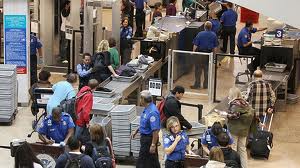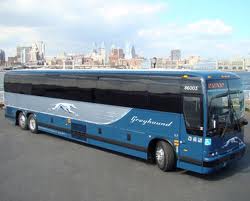General Travel and Safe Transport of Knives Tips
By Mike Haskew
In the post 9-11 era, traveling with knives by air or ground requires a heightened awareness of applicable laws and methods for safe carry and transport to and from the destination.
When an airline is involved, the Transportation Safety Administration (TSA) enforces strict rules. A knife owner traveling with his or her trusty two-blade trapper is subject to scrutiny and possible confiscation, just as the knife dealer traveling to a show with multiple collectible pieces, or the chef heading home from a culinary event. The TSA had announced plans to revise its restrictions on knives carried aboard aircraft by passengers rather than packed in luggage effective April 25, 2013. Implementation was stopped on the policy which would have allowed folding knives of up to 2.36 inches in length and less than a half-inch wide to be carried legally and be consistent with international guidelines.

Some lawmakers have strongly opposed the TSA policy revision and are contemplating legislation to reverse any TSA decision and ban carry-on knives of any size from aircraft. Nevertheless, the planned revision marks a significant victory for knife owners.
“There is no flexibility for TSA officers, only absolutes,” commented C.J. Buck of Buck Knives. “There has been an evolution within the PIL (Prohibited Items List) that is the final word in what can or cannot be carried through security and onto aircraft. Small knives of very specific description will soon be allowed; however, all other knives must be checked. It is perfectly legal to transport in your checked luggage anything that is legal to possess. Traveling by plane usually involves crossing state lines, so you should verify any possession restrictions, both state and local, regarding your destination.”
Travelers who board commercial bus lines are subject to stringent rules as well. Greyhound, for example, prohibits knives and other sharp or edged implements aboard its vehicles, although it offers a shipping service for those who require it. The bus line also abides by local laws when it comes to knives, and the fact that state lines are frequently crossed may pose additional issues for knife owners.

Driving a personal vehicle to a destination still requires a knife owner to understand the basic knife laws in certain jurisdictions. These statutes vary from state to state, considering blade length, types of opening mechanisms, and definitions of switchblade versus assisted opening.
Of course, observing general rules of safe knife use is a must. “Basic safety means do not use a knife while the car is in motion,” urged Buck. “It is the same as the old adage of not running with scissors, only you are in a car going 70 miles per hour.”
Extended safety precautions include maintaining an emergency or first aid kit in the vehicle, complete with an implement capable of cutting a seat belt in a situation that requires the extraction of an accident victim.
Air travel remains the most problematic for knife owners, particularly collectors and those who make their living with knives, such as purveyors, custom knifemakers, or show and venue promoters. C.J. noted, “With checking your knife in your luggage, just be sure the blade is properly protected so that under some pretty rough treatment the blade will not be exposed and damage your other items, destroy your luggage, or hurt a baggage handler. I always pack knives in sheaths or at least a cardboard blade cover. I also wrap multiple knives in bathroom towels. It keeps them secure and safe from scratches from vibrating surfaces.”
Some travelers prefer to pack their knives in specially designed folding cases, such as those made by Pelican or Bill’s Custom Cases, or simply put the knives in the back pockets of their pants, and then roll the pants securely in the suitcase. Others use zippered pouches, foam padding, and bubble wrap tubes to prevent knives from rattling around in an airplane’s cargo hold and being otherwise scratched or damaged during transfer or luggage inspection.
Despite increased surveillance efforts, some travelers are still concerned about potential damage or theft by baggage handlers or TSA screeners. Knifemaker Ken Onion reported losing 14 custom knives worth approximately $40,000 sometime during a trip to a show in California in 2006. Others have experienced losses or damage to their luggage and contents. Although some confusion exists, it is permissible to request hand inspection of luggage by TSA personnel after disclosing the presence of knives and for the traveler to be present during the inspection to personally lock the baggage following the screening process.
Small GPS tracking devices may be used to track luggage and ensure that it is on the same plane as the owner. Photographing or videotaping the contents of luggage may also help identify any piece that is lost or stolen, and insurance is available.
Knife show organizer and promoter Steve D’Lack of Fifty Fifty Productions is an advocate of shipping knives to their destination rather than running the greater risk of loss or damage during air travel. “I have heard of knife handles being cracked when they were taken out of the baggage, and many times the guys searching luggage have no clue about how expensive knives are,” said Steve. “I know there have been thefts at airports and that some inspectors have been caught during sting operations.

“If you go by car, the knives are always in your possession,” D’Lack continued, “but it is best not to fly with knives, in my opinion. Airlines do lose luggage. I like to wrap the knives up and ship them, and I do that from 10 to 12 times a year. The package can be insured when it is shipped. You know your knives have been in somebody’s hands, and everything is pretty safe. I may start shipping my clothes that way too instead of packing luggage!”
Purveyor Neil Ostroff of True North Knives is a firm believer in shipping knives, whether to an upcoming show or for delivery to a customer. The only knife that goes into his pocket or luggage is the one he intends to carry upon arrival.
“I rarely travel with knives,” Neil commented. “I have no faith in the airline staff and handlers, although I believe the TSA to be honest. We take great care in packing knives so they arrive at their destination in the same condition as when they leave here. It has almost become an industry joke about how long it takes to unpack knives from us once they arrive at their destination.”
When knives arrive at True North from a supplier, they are checked for any damage three separate times. When knives are shipped out, they are placed in TNK logo pouches if these have not been supplied by the custom knifemaker. Each knife is then placed in a bubble wrap mailer, then in a second heavier bubble wrap mailer, and ultimately surrounded by recycled packing filler inside the FedEx or UPS shipping box.
“In 15 years, we have not had a single complaint of a knife damaged in transit,” concluded Ostroff. People do make mistakes, and there is always the potential for that forgotten pocketknife or small folder that exceeds TSA policy standards to be inadvertently left in a briefcase that finds its way to a screening station. Procedures are likely to vary from airport to airport; however, when an owner has a knife confiscated it is reasonable to ask for a receipt and whether the owner can return at a later time and claim his property. If a knife is missing after baggage is claimed, file a report with the airline and expect the incident to be referred to the TSA for possible resolution.
“As you might imagine,” commented C.J. Buck. “I am often traveling with knives, many of them. Our local airport is Spokane International, and since we are usually wearing Buck branded clothing and travel often, it is routine for the screeners to ask where we are off to this week. I have made many a decision whether to run an item back to the car or donate it to the cause.”
With all the emphasis on safe travel and the prevention of terrorist attacks aboard aircraft or ground transportation, additional revisions to some of the most restrictive TSA regulations may come in the future.
“I am sensing an openness to reevaluate the restrictions in air travel,” said Buck. “It is not to sacrifice safety for convenience, but rather to improve security by focusing the screeners’ attention on items that truly do pose a danger to the airplane.”
Meanwhile, those who travel with knives do well to be informed about knife laws and exercise care in the transportation, shipping, and carrying of these essential tools.